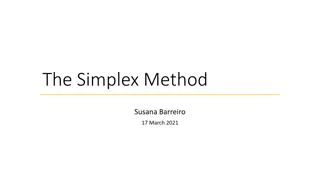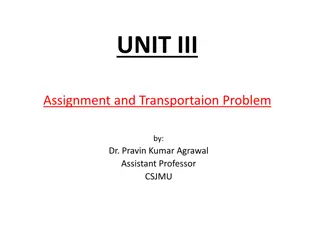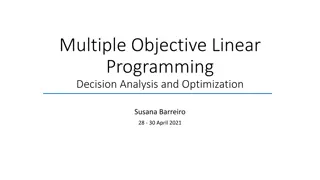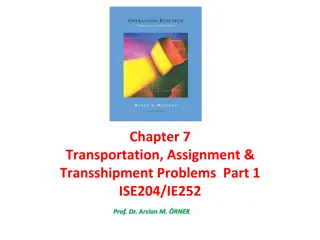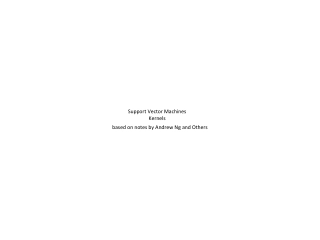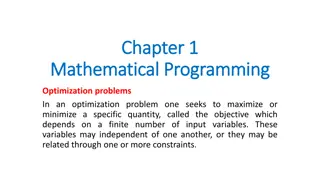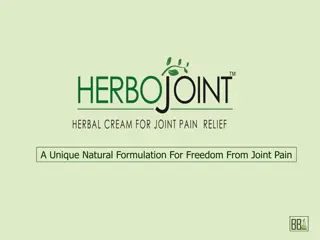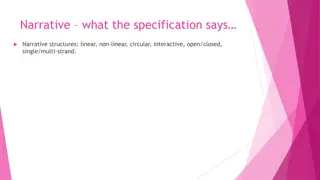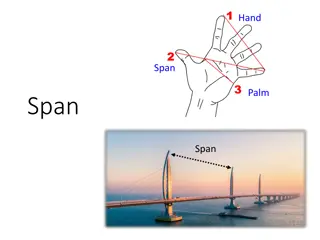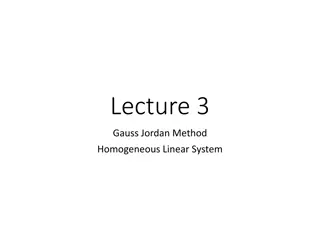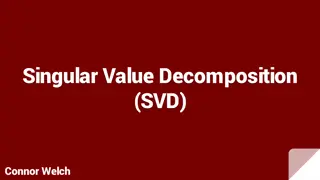Formulation of Linear Programming Problems in Decision Making
Linear Programming is a mathematical technique used to optimize resource allocation and achieve specific objectives in decision-making. The nature of Linear Programming problems includes product-mix and blending problems, with components like decision variables and constraints. Various terminologies such as profit or cost coefficients and input-output coefficients play essential roles in formulating and solving Linear Programming problems.
Download Presentation

Please find below an Image/Link to download the presentation.
The content on the website is provided AS IS for your information and personal use only. It may not be sold, licensed, or shared on other websites without obtaining consent from the author. Download presentation by click this link. If you encounter any issues during the download, it is possible that the publisher has removed the file from their server.
E N D
Presentation Transcript
FORMULATION OF LPP RAYSHIMA N ASSISTANT PROFESSOR OF MATHEMATICS HAJEE KARUTHA ROWTHER HOWDIA COLLEGE
FORMULATION OF LINEAR PROGRAMMING PROBLEM INTRODUCTION TO LINEAR PROGRAMMING Linear Programming is a problem solving approach that has been developed to help managers to make decisions. Linear Programming is a mathematical technique for determining the optimum allocation of resources and obtaining a particular objective when there are alternative uses of the resources, money, manpower, material, machine and other facilities. THE NATURE OF LINEAR PROGRAMMING PROBLEM Two of the most common are: 1. The product-mix problem 2. The blending Problem
FORMULATION OF LINEAR PROGRAMMING PROBLEM In the product-mix problem there are two or more product also called candidates or activities competing for limited resources. The problem is to find out which products to include in production plan and in what quantities these should be produced or sold in order to maximize profit, market share or sales revenue. The blending problem involves the determination of the best blend of available ingredients to form a certain quantity of a product under strict specifications. The best blend means the least cost blend of the required inputs. FORMULATION OF THE LINEAR PROGRAMMING MODEL Three components are: 1. The decision variable 2. The environment (uncontrollable) parameters. 3. The result (dependent) variable
FORMULATION OF LINEAR PROGRAMMING PROBLEM TERMINOLOGY USED IN LINEAR PROGRAMMING PROBLEM 1. Components of LP Problem: Every LPP is composed of a. Decision Variable, b. Objective Function, c. Constraints. 2. Optimization: Linear Programming attempts to either maximize or minimize the values of the objective function.
FORMULATION OF LINEAR PROGRAMMING PROBLEM 3. Profit of Cost Coefficient: The coefficient of the variable in the objective function express the rate at which the value of the objective function increases or decreases by including in the solution one unit of each of the decision variable. The Decision Variable Objective Function. 4. Constraints: The maximisation (or minimisation) is performed subject to a set of constraints. Therefore LP can be defined as a constrained optimisation problem. They reflect the limitations of the resources. 5. Input-Output coefficients: The coefficient of constraint variables are called the Input Output Coefficients. They indicate the rate at which a given resource is unitized or depleted. They appear on the left side of the constraints. 6. Capacities: The capacities or availability of the various resources are given on the right hand side of the constraints.
FORMULATION OF LINEAR PROGRAMMING PROBLEM THE MATHEMATICAL EXPRESSION OF THE LP MODEL The general LP Model can be expressed in mathematical terms as shown below: Let Oij = Input-Output Coefficient Cj = Cost (Profit) Coefficient bi = Capacities (Right Hand Side) Xj = Decision Variables Find a vector (x1, x2, x3 ...xn) that minimise or maximise a linear objective function F(x) where F(x) = c1x1 + c2x2 + ...+ cnxn subject to linear constraints a1x1 + a2x2 + ...+ anxn = b2 a1x1 + a2x2 + ...+ anxn b2 .......................... am1x1 + am2x2 + ...+ amnxn b2 and non-negativity constraints x1 0, x2 0, ..., xn 0
FORMULATION OF LINEAR PROGRAMMING PROBLEM FORMULATION OF LPP STEPS 1. Identify decision variables 2. Write objective function 3. Formulate constraints EXAMPLE 1. (PRODUCTION ALLOCATION PROBLEM) A firm produces three products. These products are processed on three different machines. The time required to manufacture one unit of each of the three products and the daily capacity of the three machines are given in the table below:
FORMULATION OF LINEAR PROGRAMMING PROBLEM It is required to determine the daily number of units to be manufactured for each product. The profit per unit for product 1, 2 and 3 is Rs. 4, Rs.3 and Rs.6 respectively. It is assumed that all the amounts produced are consumed in the market. Formulate the mathematical (L.P.) model that will maximise the daily profit. Formulation of Linear Programming Model Step 1 From the study of the situation find the key-decision to be made. In the given situation key decision is to decide the extent of products 1, 2 and 3, as the extents are permitted to vary. Step 2 Assume symbols for variable quantities noticed in step 1. Let the extents (amounts) of products 1, 2 and 3 manufactured daily be x1, x2 and x3 units respectively.
FORMULATION OF LINEAR PROGRAMMING PROBLEM Step 3 Express the feasible alternatives mathematically in terms of variable. Feasible alternatives are those which are physically, economically and financially possible. In the given situation feasible alternatives are sets of values of x1, x2 and x3 units respectively. where x1, x2 and x3 0. since negative production has no meaning and is not feasible. Step 4 Mention the objective function quantitatively and express it as a linear function of variables. In the present situation, objective is to maximize the profit. i.e., Z = 4x1+ 3x2 + 6x3 Step 5 Put into words the influencing factors or constraints. These occur generally because of constraints on availability (resources) or requirements (demands). Express these constraints also as linear equations/inequalities in terms of variables. Here, constraints are on the machine capacities and can be mathematically expressed as 2x1+ 3x2 + 2x3 440 ,4x1+ 0x2 + 3x3 470 , 2x1+ 5x2 + 0x3 430
FORMULATION OF LINEAR PROGRAMMING PROBLEM EXAMPLE 2: PRODUCT MIX PROBLEM A, 1.5 machine hours and 2.5 labour hours are required. To manufacture product B, 2.5 machine hours and 1.5 labour hours are required. In a month, 300 machine hours and 240 labour hours are available. Profit per unit for A is Rs. 50 and for B is Rs. 40. Formulate as LPP. A factory manufactures two products A and B. To manufacture one unit of Solution:
FORMULATION OF LINEAR PROGRAMMING PROBLEM There will be two constraints. One for machine hours availability and for labour hours availability. Decision variable: X1 = Number of units of A manufactured per month. X2 = Number of units of B manufactured per month. The objective function: Max Z = 50x1+ 40x2 Subject to Constraints: For machine hours 1.5x1+ 2.5x2 300 For labour hours 2.5x1+ 1.5x2 240 Non negativity x1, x2 0
FORMULATION OF LINEAR PROGRAMMING PROBLEM EXAMPLE: 3 A company produces three products A, B, C. For manufacturing three raw materials P, Q and R are used. Profit per unit A - Rs. 5, B - Rs. 3, C - Rs. 4 Resource requirements/unit Maximum raw material availability: P - 80 units; Q - 100 units; R - 150 units. Formulate LPP
FORMULATION OF LINEAR PROGRAMMING PROBLEM Solution: Decision variables: x1 = Number of units of A x2 = Number of units of B x3 = Number of units of C Objective Function : Since Profit per unit is given, objective function is maximisation Max Z = 5x1+ 3x2 + 4x3 Constraints: For P: 0x1+ 20x2 + 30x3 80 For Q: 20x1+ 30x2 + 20x3 100 For R: 50x1+ 0x2 + 40x3 150 (for B, R is not required) X1, X2, X3 0





